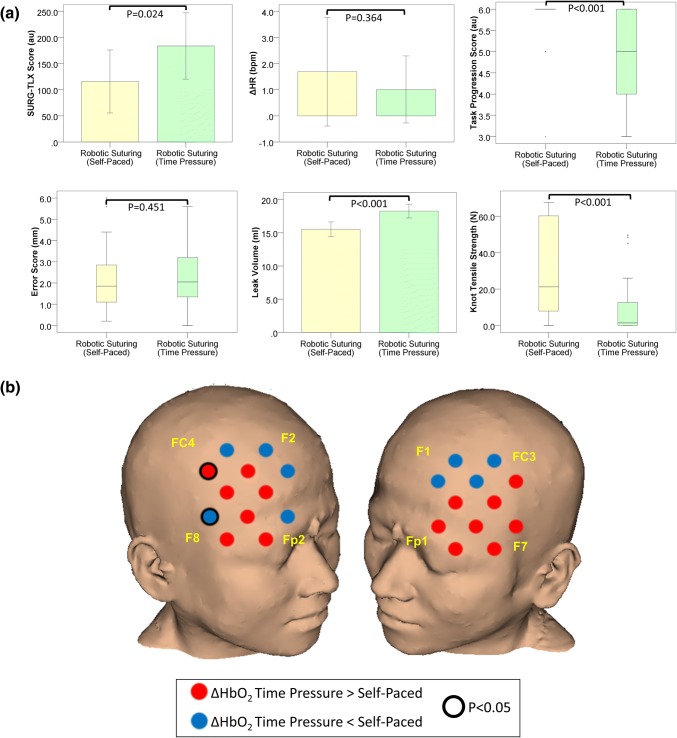Figure 3.
(a) Subjective workload (SURG-TLX) scores, heart rate, and technical performance in self-paced (yellow bars) and time pressure (green bars) conditions during robotic suturing. Error bars represent the 95% confidence interval; (b) Comparison of the HbO2 response (ΔHbO2) in time pressure and self-paced conditions during robotic suturing. Channels exhibiting a smaller HbO2 response in the time pressure compared to the self-paced condition are blue, whereas those exhibiting a smaller response in the self-paced condition are red. Channels in which there was a significant difference (p < 0.05, Wilcoxon Signed Ranks test) in the HbO2 response between conditions are outlined (black circle). Reference points of the 10–20 system of optode placement are shown in yellow (right PFC: Fp2 = source 6, F8 = source 7, F2 = source 9, FC4 = source 10; left PFC: Fp1 = source 2, F7 = source 1, F1 = source 5, FC3 = source 4). Au arbitrary units, ΔHR change in heart rate from rest to task, bpm beats per minute, mm millimetres, mL millilitres, N Newtons.

